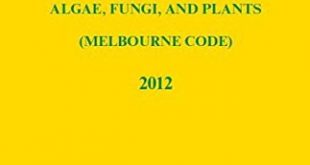The steps in the biosystematic investigation are as follows A sampling of taxon and its population and cytological study of the chromosome of many populations within geographical races, species, and genera; differences in chromosome number, morphology, and behavior of meiosis indicated genetic differences. Determination of the ability of the different …
Read More »Views on Species Concept
Species is the basic & smallest whit of classification which is represented by binomial nomenclature according to ICBN. Two individuals with maximum similarities which can interbred among themselves & produce fertile individual & also can exchange gene are called Species. A Species concept is a concept that is the production …
Read More »IUCN Red List Categories
The International Union for Conservation of Nature’s Red List of Threatened Species Established in 1964, has evolved to become the world’s most comprehensive information source on the global conservation status of animal, fungi and plant species. The IUCN Red List is a critical indicator of the health of the world’s …
Read More »Division II: Rules and Recommendation
Melbourne Code Division II: Rules and Recommendation Chapter II: STATUS, TYPIFICATION, AND PRIORITY OF NAMES Section I: Status Definitions Article 6 (*Some articles are cropped to avoid more detailed info unnecessary in our level. If you wish, you can read the full code from the link here: Melbourne Code) 6.1. Effective …
Read More »Division I: Principles of ICN
DIVISION I PRINCIPLES PRINCIPLE I The nomenclature of algae, fungi, and plants is independent of zoological and prokaryotic nomenclature. This Code applies equally to names of taxonomic groups treated as algae, fungi, or plants, whether or not these groups were originally so treated. PRINCIPLE II The application of names of taxonomic …
Read More » Plantlet The Blogging Platform of Department of Botany, University of Dhaka
Plantlet The Blogging Platform of Department of Botany, University of Dhaka



